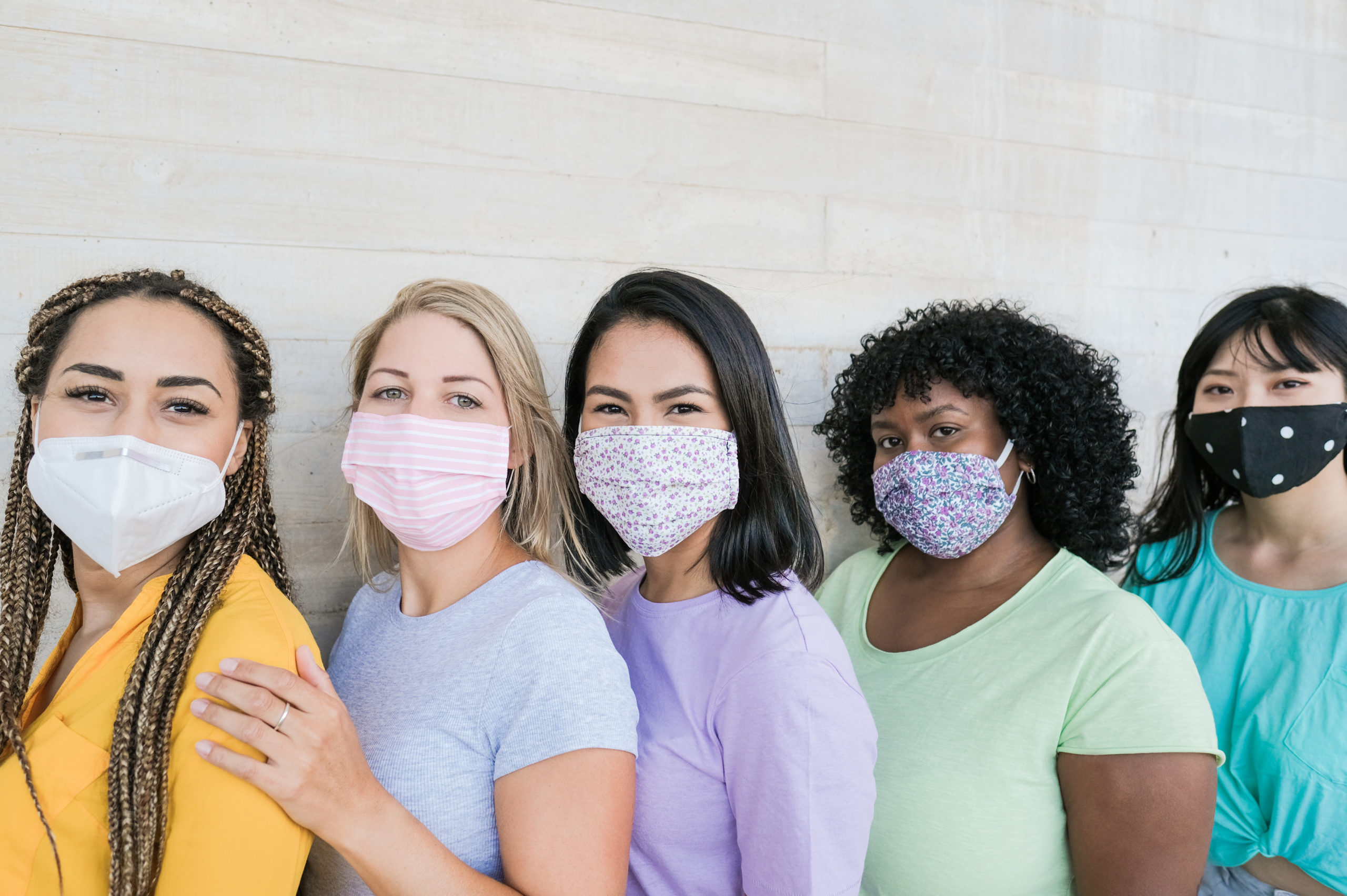By Liz Hay, SWHR Communications Intern
The COVID-19 pandemic has changed lives across the world, but not to the same extent. Vast gender and racial disparities characterize the pandemic in the United States.
Women of color are hit by a double burden: Women in the U.S. are bearing the brunt of the pandemic’s economic impacts, while communities of color — particularly Black, Hispanic, and American Indian and Alaska Native populations — have been hit harder by the disease itself. People of color make up a disproportionate number of COVID-19 cases and deaths not because of biological reasons, but rather due to systemic barriers to their health care. Racial health disparities stem from social determinants of health — the social, economic, and physical conditions and environments that in many ways predict health outcomes and quality of life.
To achieve health equity, we must close these gaps and attain the highest level of health for all people. The Society for Women’s Health Research (SWHR) is committed to achieving health equity for women of all backgrounds, races, and ethnicities. Last month, SWHR’s Policy Advisory Council meeting featured experts from the Black Women’s Health Imperative (BWHI), the National Institute on Minority Health and Health Disparities (NIMHD), and FasterCures to address important issues surrounding COVID-19 and women’s health disparities.
Research Disparities
Historically, women and people of color were often excluded from medical research, and while some progress has been made, disparities persist today. The most recent and concerning examples arise in crucial coronavirus research.
Pregnant women and lactating women are being excluded from ongoing late-stage vaccine clinical trials, even though COVID-19 may cause severe illness in pregnant women. In addition, practical and economic factors may prevent women’s participation in research. “The needs around childcare and maintaining their employment and career may create extra economic barriers to participation in these scientific endeavors,” said Dr. Monica Webb Hooper, deputy director of NIMHD.
Because people of color are disproportionally affected by COVID-19, they must be included in clinical research to ensure vaccines and treatments are safe and effective for them. However, the historical exploitation of Black people and other people of color in research has eroded the relationship between communities of color and researchers. One way to rebuild these relationships is to bring members of these communities to the table early on in the process to get their input on what they need and to partner with community organizations in recruitment efforts, in addition to building trust and a new path forward.
Esther Krofah, executive director of FasterCures, said another way to combat disparities in research is to improve oversight and regulation. While federal agencies attempt to improve clinical trial diversity through improved guidelines, she said that isn’t sufficient to regulate private companies. “There’s recognition that we need diverse populations, but there isn’t as much in terms of enforcement for private research,” Krofah said. “It’s an uphill climb.”
Experts are also concerned that failure to recruit sufficiently diverse populations for clinical trials may delay access to a vaccine because studies are intended to reflect the population affected by the disease. There are also concerns about whether communities of color will have adequate access to and uptake of a vaccine when one becomes available.
Barriers to Testing & Treatment
Women of color may also experience difficulties in accessing COVID-19 tests and treatments due to economic and geographic barriers. Especially at the beginning of the pandemic, testing sites were largely concentrated in white, affluent neighborhoods. For women in non-white, lower-income neighborhoods, finding transportation to those sites presents a significant barrier to testing. Projects like the National Institutes of Health RADx Initiative are seeking to address this by rapidly expanding research on diagnostic testing with a focus on racial/ethnic minorities and other underserved populations.
Concerns about the cost of coronavirus testing may also deter low-income or underinsured women from getting tested. Although Congress passed laws in an effort to require insurers to pay for coronavirus testing, treatment, and related services, some patients are still being billed, either mistakenly or through loopholes in the legislation.
In addition, according to a recent analysis by the Kaiser Family Foundation, higher hospitalization and death rates among patients of color persisted even after controlling for certain sociodemographic factors and underlying health conditions, suggesting that factors like racism are playing a role. “This is not an issue of genetics or biology,” said Linda Goler Blount, president and CEO of BWHI. “This is happening because of the experience of being Black in this society and what that means for our health.”
Flawed and Incomplete Data
Underlying these disparities in COVID-19 research, testing, and treatment are problems with incomplete, biased data. “When you look across the U.S. from a data perspective, we’re not doing a great job,” Krofah said.
Detailed data could inform targeted testing sites, focused vaccine research, and individualized treatment options. However, data have been missing from some areas with diverse populations and some data have not been disaggregated to reveal racial and gender disparities, particularly at the beginning of the pandemic.
The lack of a unified, nationwide process for reporting health information has implications beyond the COVID-19 response and can exacerbate racial and gender biases across the health care system. While groups are working to fill in these data gaps and there have been improvements to demographic data collection throughout the pandemic, COVID-19 data gaps impede our ability to enact a quick, effective response that adequately accounts for racial and gender disparities.
A Call for Health Equity
Recognizing the health disparities faced by women of color during the pandemic is the first step toward mitigating these disparities in COVID-19 and beyond. The pandemic is exacerbating disparities that have existed for centuries, but it has also created an opportunity to catalyze change. The pandemic in America and broader national environment has led to this pivotal moment for stakeholders at all levels to work toward a common goal: health equity.
